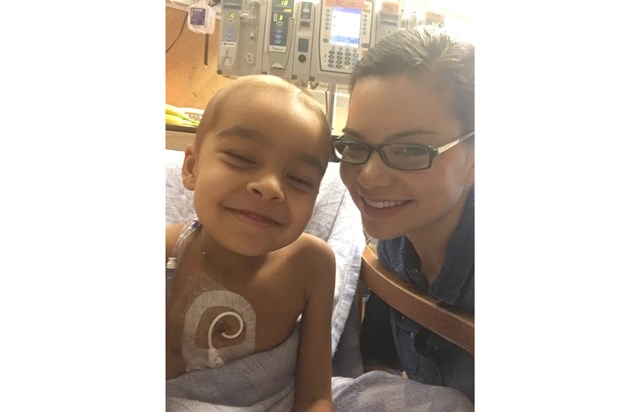You may feel like you’re under a cloud or you’ve taken a fall on the ice.
That’s about the extent of your “injuries,” should you be found to be a stem cell match for someone fighting for their life.
It doesn’t take much to give and those who are able have another chance to help save six-year-old Richmond kid Joshua Weekes and others across Canada at another blood and bone marrow drive, this time at McNair secondary on Thursday, May 12.
Grade 1 DeBeck elementary student Joshua has a rare form of leukemia and a unique ethnicity of Filipino, British, Icelandic and Caribbean — making it difficult to find a match.
He urgently needs a stem cell transplant and is undergoing chemotherapy after being diagnosed with acute myeloid leukemia.
Despite the push from the local community and beyond — including a similar drive hosted by co-workers of Joshua’s mom, Lia, — a match has yet to be found.
Trudi Goels, of Canadian Blood Services, which will help McNair staff and students host the drive, said the single, biggest question her oganization hears from people thinking about registering is “what physically happens” if they’re found to be a match.
“About 80 per cent of the time, they donate stem cells, which is just like giving blood,” explained Goels.
“It takes about five hours, on a bed, giving blood from one arm at a transplant centre in Vancouver General Hospital. The stem cells are extracted during the transfusion and the blood is then pumped back in.”
“There is little or no risk (with this method), they may just feel tired (or flu-like) after.”
For the other 20 per cent of the cases, a bone marrow donation is required, which involves a surgical procedure under anaesthetic, whereby a hollow needle goes into the back of the hip bone and some bone marrow is removed.
“Like anything with a general anaesthetic, it carries a risk,” Goels said. “Afterwards, it feels like you’ve maybe fallen on some ice, but you’re back into your routine in a few days.”
Goels said whether or not surgery is required is determined by a physician and is based on the “best outcome for the (donor).”
The McNair drive is being held from 10 a.m. to 5 p.m. for people over 17. Book your appointment at Blood.ca or download the GiveBlood app. You can also join the national stem cell registry online at Blood.ca.
Canadian Blood Services said it will need about “600 blood donations in Richmond to help patients throughout the summer.”
“We have a greater need for donors with Type O blood, but all donors are encouraged to get involved,” said David Patterson, director of donor relations in the B.C. and Yukon region.
At the McNair drive, the target is 101 donations



